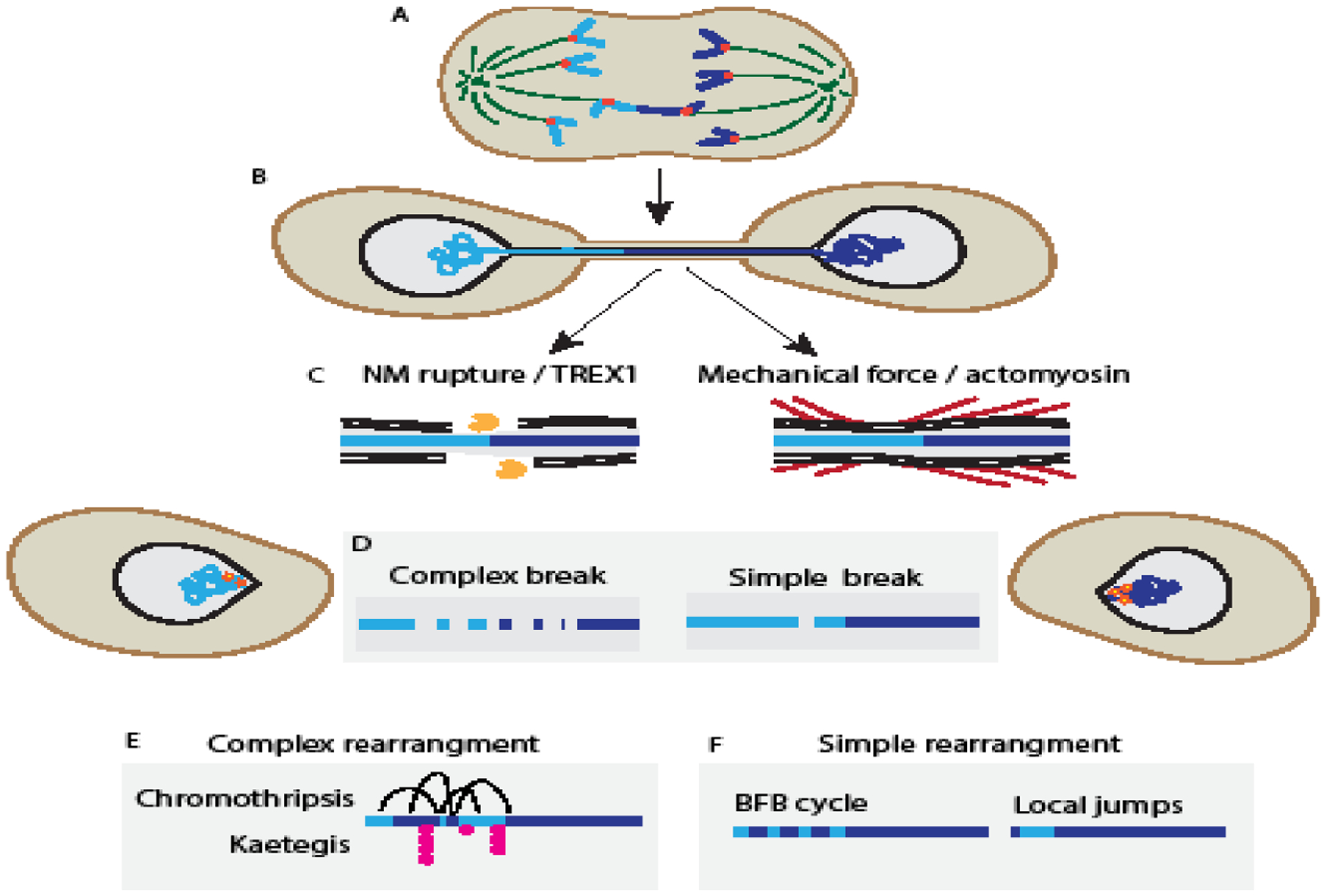Figure 2:

Chromatin bridge breakage causes complex and simple genome rearrangements
(A) Telomere crisis leads to telomere fusion and dicentric chromosomes, which form a (B) chromatin bridge when the two centromeres are pulled towards opposing spindle poles during mitosis. (C) Two models for interphase bridge resolution are left: nuclear membrane (NM) rupture causes bridge resection by the 3’-exonuclease TREX1, generating tracts of ssDNA, or right: cell migration causes bridge breakage through actomyosin-based forces (red). (D) Left: TREX1-dependent bridge breakage is associated with extensive DNA damage and chromatin fragmentation. Right: Whereas, mechanical breakage shows limited DNA damage, including simple breaks. (E) Chromosome fragmentation during bridge breakage results in chromothripsis from end-joining repair pathways and ssDNA exposure results in kataegis from APOBEC3B editing. (F) Limited DNA damage during bridge breakage causes highly local rearrangements, including local jumps and small insertions, and initiate breakage-fusion bridge (BFB) rearrangements.
